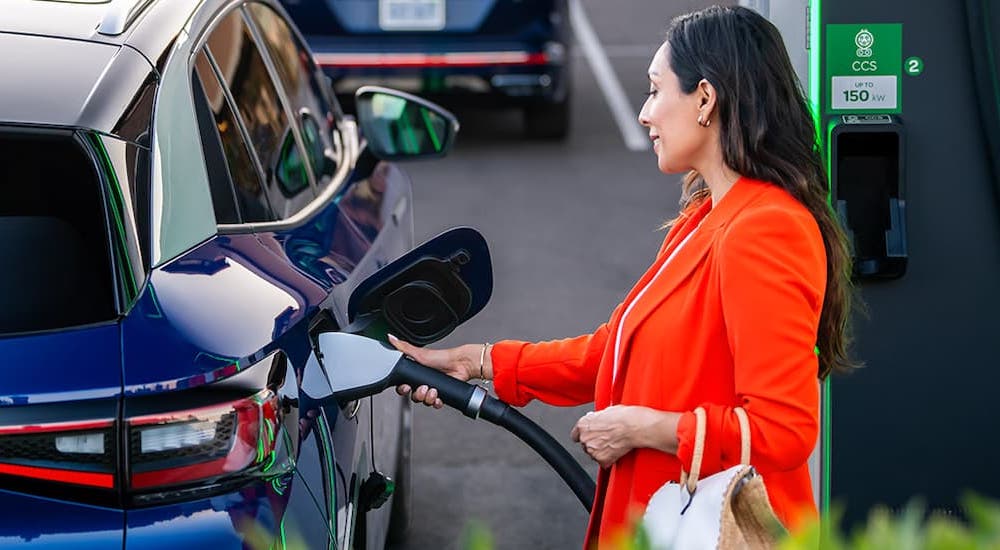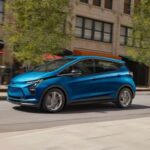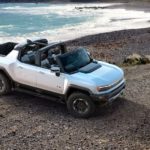If you are like most of your fellow Canadians, you’ve owned your fair share of cell phones over the years and know how different phones use different chargers. Believe it or not, a similar situation exists with electric vehicles (EVs). These battery-powered models need to be plugged in to recharge, but they don’t all use the same plug––some even have multiple plugs! If you decide to go looking for electric vehicles for sale, you are going to need to know the ins and outs of keeping your EV charged. Currently, four different EV charging standards are available across three charging levels. They each have different uses and also work with different models. Getting to know the differences will enable you to use the right one for your EV.
Staying on the Level With Your EV Charger
Throughout Canada, there are three different levels of charging for EVs. The first two are for AC connections, while the third is for DC fast charging. The easy way to think about this is that AC power is slower but readily available, while DC power is fast but only found at certain locations.
Level 1
Level 1 chargers have a 120 Volt input. These are typically used for home charging and take the longest of the three levels. Charging a typical EV from empty to 100 percent can take around 40 hours with a Level 1 charger. This is because it will only add about three to five kilometres of range to your EV per hour of charging. As such, most folks only use Level 1 as a backup plan, hoping to add a little juice to their EV when at a friend or relative’s house before returning home.
Level 2
Level 2 charging is also AC like Level 1, but has an input of 240 Volts. Since this requires a higher voltage, most electricians recommend adding a dedicated line to your home’s electrical panel, like you would for a clothes dryer or oven. These work much faster, with the ability to fully recharge an EV’s battery pack in around 10 hours. This is because it can charge at a rate of up to 50 kilometres per hour. Most EV owners use Level 2 charging when they come home for the night, so they will have a full battery when they wake up.
Level 3
Level 3 is the fastest of the three different types. This is for use at public fast charging stations and can supply up to 350 kW of DC power. As a result, it can recharge your EV’s battery to 80% in as little as 20 minutes (DC fast chargers throttle down after 80% to protect the battery). If you are travelling on the highway, you can pull over at a DC fast charger, plug in your EV, and fully recharge your battery while you have a cup of coffee or a bite to eat.
Level 1 and Level 2 Plugs
The difference between the types of plug and socket used for EVs depends on two main factors: what level of charging you are using and what brand of EV you are driving. Instead of gas tanks with gas caps, EVs have a socket under a cover to protect it from the elements. This is where you place the part of the plug intended for your EV. The other end will then be plugged into the power source. Always make sure you are plugging in the right end when charging at home. It shouldn’t be too difficult since the plug will have one end that looks like the socket on your EV and another that is a grounded three-prong end. Fortunately, public chargers provide the plug, so you won’t run the risk of making this mistake.
If you are charging at home, you will most likely be using an SAE J1772 plug. This looks like a circle with a flattened top and five smaller circles inside of it. The J1772 plug is used by most automakers except for Tesla. All Tesla models except for the original Roadster use a different plug called NACS (“North American Charging Standard”). This plug is a smaller rounded triangle that has two large circles on top and three smaller circles on the bottom. While J1772 is only used for AC charging, NACS supports both AC and DC charging in a smaller footprint, but we’ll get to that in a moment.
DC Fast Charging Plugs
For DC fast charging, there are three different socket types. These are not interchangeable, so you must always use the correct one for your model. This is particularly important to keep in mind since you don’t want to pull up to a charging station with an almost empty battery only to find it doesn’t support your car. The good news is that the industry is moving towards a common standard, and plug adaptors are becoming available.
CHAdeMO
The oldest type of DC plug is CHAdeMO, which was developed in Japan in 2010. The name is an abbreviation of the Japanese for “Do you want a cup of tea?” which refers to how long it takes to recharge. This circular plug has two large circular pins on the sides and two circular sections with four pins each on the top and bottom. Currently, it is used on the Nissan LEAF and Mitsubishi Outlander PHEV. However, these brands have signalled that they are going to discontinue the use of the CHAdeMO design in favour of more modern plugs that support faster charging rates, with Nissan already making the switch for its new ARIYA.
CCS
The most common plug is CCS, which stands for Combined Charging System. This plug was developed in Germany by a coalition of automakers and is managed by the Charging Interface Initiative (CharIN). CCS was rolled out in 2013 and combined the J1772 outlet with a pair of large DC charging pins below it rather than requiring two separate outlets like the J1772 and CHAdeMo combination. This has become the standard DC charging plug for every brand except for Tesla, and nearly all public DC fast charging stations in Canada support it.
NACS
The third type is NACS, as mentioned above. This was developed by Tesla as a proprietary charging standard in 2012 to combine both AC and DC charging and is found on all Tesla models. It is significantly more compact than CCS, and the Tesla Supercharger network is the largest and most reliable network of DC fast charging stations. In 2022, Tesla published NACS as an open standard and invited other manufacturers to use the Supercharger network. Many major automakers, including Ford, GM, Nissan, Mercedes-Benz, and Volvo, have since announced their intentions to move to NACS for future models starting in 2025
Join the EV Charge by Keeping Your Battery Charged
Recharging the battery in your EV isn’t that difficult. Once you get to know the type of charging socket on your model, you will never have a problem using the right plug to recharge the battery. With practice, this will become a simple and easy task, not unlike how you got used to pumping gas into your car when you first learned how to drive. While you are dealing with large amounts of AC or DC voltage, all the charging plugs are designed to only activate when they are securely locked to the vehicle. Recharging an EV is much safer than filling up the gas tank on a conventional car, and you won’t be exposed to potentially harmful chemicals. While it may take a few minutes longer to recharge your EV than to fill up a gas tank, you can always use that short break for a coffee or, if you’re driving an EV with a CHAdeMO socket, a cup of tea.

